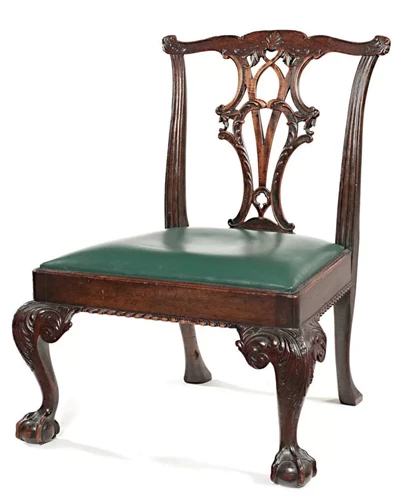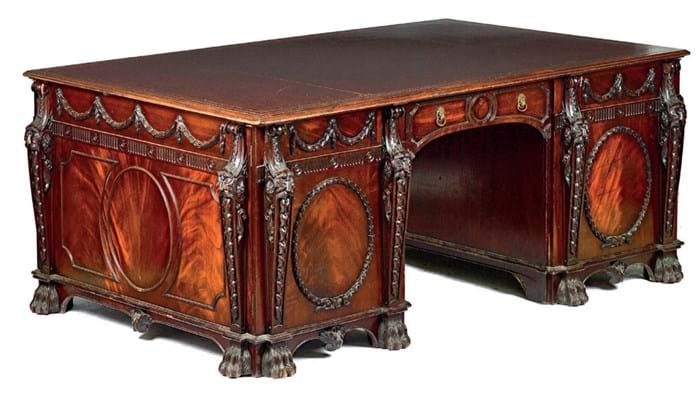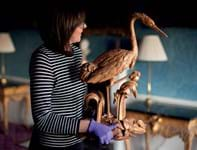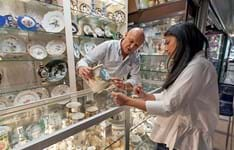
His eldest son Thomas Chippendale Junior (1749-1822), who had been involved in the family firm for most of his life, ran the workshop in St Martin’s Lane until 1813 when, beset by the financial difficulties that had dogged his father, the business closed. With no children surviving to adulthood, Chippendale Junior was the last to carry the family name.
However, the true Chippendale legacy was not a family dynasty but a book of designs. It was The Director – as a pioneering and successful exercise in self-promotion – that made ‘Chippendale’ a name synonymous with all fine-quality furniture.
Furniture ‘in the Chippendale style’ has come to encompass a broad range of pieces and periods.
It can reference pieces of similar magnificence and quality from the third quarter of the 18th century made to Chippendale’s designs by other London furniture workshops. It may also describe a large number of well-made 18th century pieces that assume less ambitious designs or the ‘country Chippendale’ furniture made in modish styles produced by regional cabinetmakers using vernacular timbers.
The impact of The Director was clearly seen overseas with recognisably ‘Chippendale’ furniture produced in Dublin, Philadelphia, Lisbon, Copenhagen and Hamburg, where a generation of furniture makers and carvers developed their own interpretations of the rococo style.
Chippendale revivalism
However, much of what is today described as ‘Chippendale furniture’ is not from the Georgian era at all and instead hails from the Victorian and Edwardian periods when revivalism and historicism were the fashion. The best-quality examples can command substantial sums on their own.

This 20th century copy of the famous Chippendale desk at Nostell Priory sold at £6000 at Bellmans in Billingshurst, West Sussex on May 12. Chippendale delivered the Nostell desk in June 1767 at a cost of £72, 10s’.
Direct copies of some of Chippendale’s most famous pieces – such as the desk made for Sir Roland Winn at Nostell Priory – continue to be made today. The skills do survive.
Several of the Chippendale 300 partners will be focusing on Chippendale’s continuing legacy in the 21st century – among them the Master Carvers Association, whose members plan to make a collection of music stands in homage to their forebears. Their work will be on display at The Sladmore Gallery in London in June.














